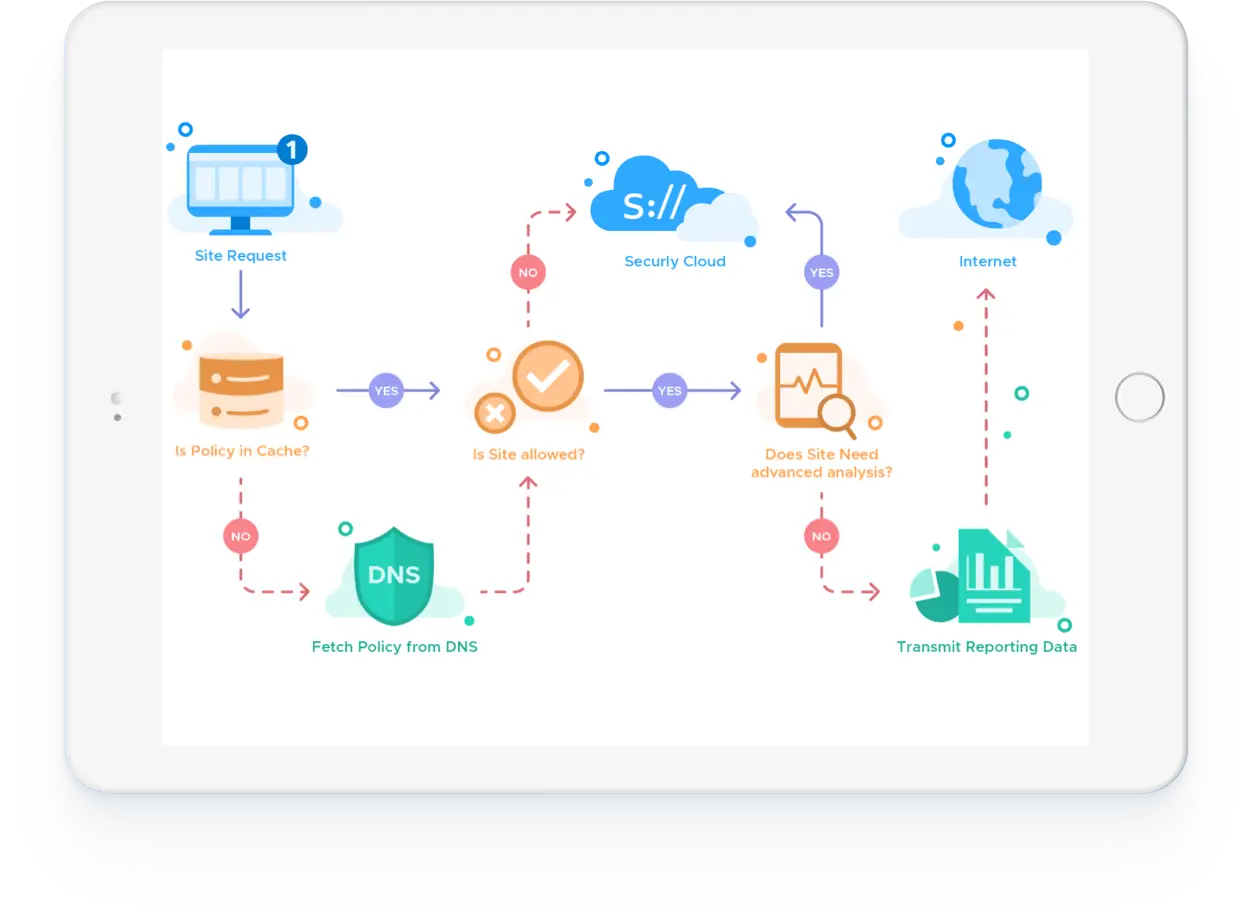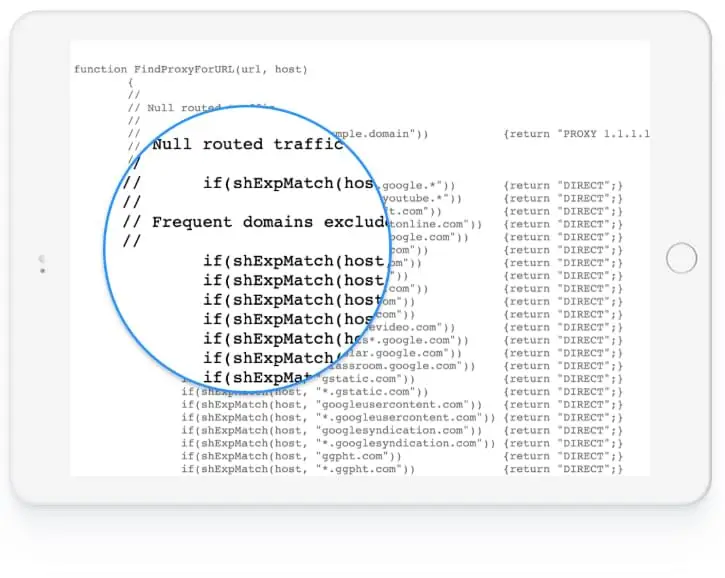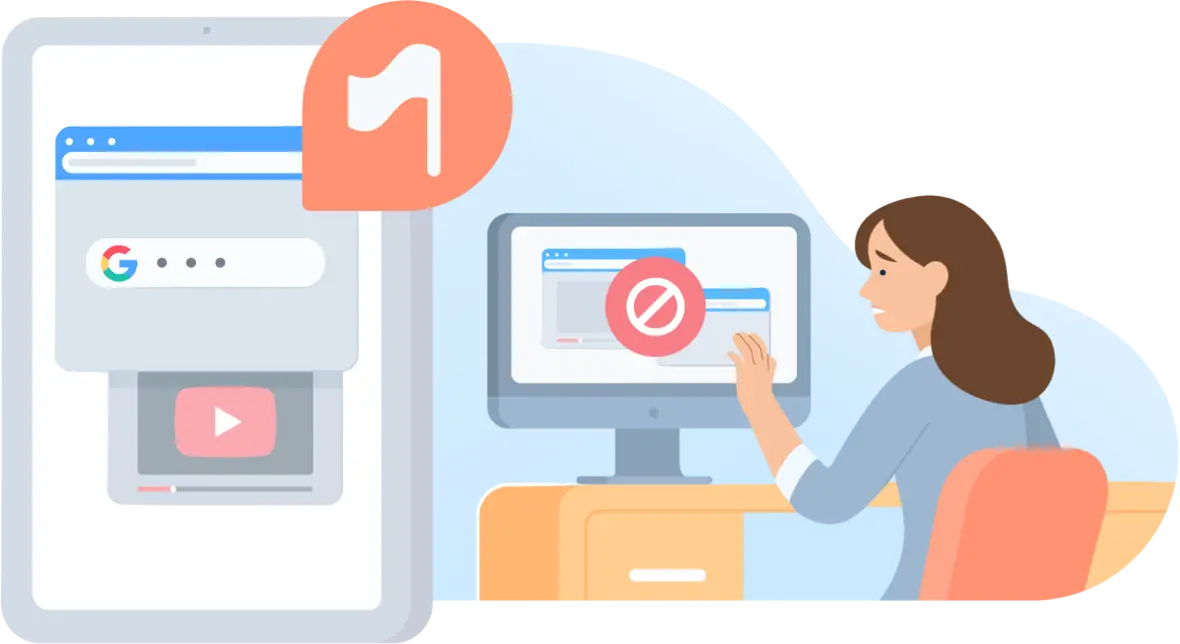A look into the remote filtering of school devices
How SmartPAC evolved to become the preferred on and offsite filtering solution for thousands of schools worldwide.
Try SmartPAC todayHow SmartPAC evolved to become the preferred on and offsite filtering solution for thousands of schools worldwide.
Try SmartPAC todayAs administrators seek out the best solution for their remote filtering needs, it may be difficult to discern the difference between all of the providers when they all claim to be an ‘any device, anywhere, any browser’ technology. The most popular web content filters offered by the edtech industry include Proxy Auto-Configuration (PAC) files, iOS agents based on Apple’s iOS content filtering API, and Securly’s SmartPAC files. Determining the right solution depends on several factors, including the types of devices to be filtered and ease of use.

The proprietary technology developed and used by Securly across millions of take-home devices, including iPads, Macs, & Windows. Students are given a unique PAC file with a unique ID number. This PAC file uses the “dnsResolve()” PAC function and a simple custom DNS “A query” of the type user. hostname.ns.securly.com to the default DNS server. Securly’s Authoritative DNS servers determine the use policy for the user, plus the filtering decision for that hostname. The PAC file then enforces this decision on the user’s device. By serving PAC files unique to each student, Securly is able to provide per-student or per-OU policies.

 Any browser, any device
Any browser, any device
Leverage user-injection of 1:1 devices for an end-user experience without credentials.
 Allows seamless Google/ Azure/AD authentication
Allows seamless Google/ Azure/AD authentication
Deploy in minutes to all of your managed devices and not be limited to any browser.
 Zero-touch authentication
Zero-touch authentication
Never worry about an OS patch or software update. Install SmartPAC once and you’re done.
 Minimal local footprint
< 10KB
Minimal local footprint
< 10KB
SmartPAC is 100% managed in the cloud with a local footprint of less than 10KB.
 Portable & easily maintained code
Portable & easily maintained code
Works identically on Windows, Macs and iPads.
 100%
cloud-based
100%
cloud-based
No software agents can bring down devices on your network with a service pack update.
 Rich reporting
Rich reporting
Richer logging including user and search keywords, plus MITM decryption.


As used by edtech providers iBoss and GoGuardian
Originally designed for Netscape Navigator in 1996, this solution is almost as old as the internet itself. A PAC file is a JavaScript function that can look at a given URL or host the user requested, and decides whether to Proxy the URL or let it through. Proxying is done when either a requested site is determined to be blocked or there is a need to perform deep packet inspection (for example, if keywords need to be inspected in a web search).
 File management - PAC
File management - PAC
PAC files require a rinse and repeat approach in terms of what to allow and what to proxy.
 One size does not fit
all
One size does not fit
all
Apps that don’t allow proxying or sites that are not logged can be accessed directly.
 On-prem filtering devices
On-prem filtering devices
For remote devices, a port must be left open on the firewall for the inbound proxy traffic creating security concerns. PAC files proxying back to an appliance on average doubles the bandwidth cost of the traffic, slowing down the entire network.

As used in Lightspeed System’s Relay solution
Apple introduced an API for iOS so that content filtering providers could provide filtering natively on an iOS device.

 No logging or reporting
No logging or reporting
Intentionally designed so that content-filtering providers are unable to log which website URL any given student accessed or was blocked on, there by limiting the very service the schools are paying for.
 Blunt blocking
Blunt blocking
No allowance for deep-packet inspections of Google searches, which in turn negates granular safety measures such as bullying or self-harm analysis by AI.
 No user authentication
No user authentication
Currently, all iPads in a district share the same policy, preventing the allowance of a per-student policy and no way for administrators to determine which users visited which sites.
Simply fill out the form and one of our student safety experts will reach out within 48 hours.
Thanks for submitting your request. We will be in touch soon.
Securly Logo